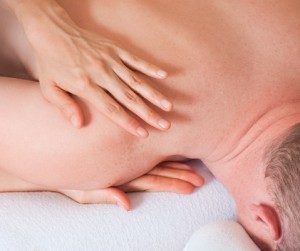 What is Therapeutic Massage?
What is Therapeutic Massage?
Massage therapy is the hands-on manipulation of soft tissue such as muscles, connective tissue, tendons, ligaments and joints. Massage therapy is designed to relieve muscular tightness, stiffness, spasms and restrictions that limit the mobility, strength, functionality and well-being of the patient.
Therapeutic massage has been shown to improve patient physiology in many ways, having a positive effect on the human muscular, nervous and circulatory systems.
Treatment
Therapeutic massage treatments involve manipulation of soft tissue, which assists in the repair of muscles by improving the movement of blood and lymph fluids throughout the body. With greater amounts of oxygen and nutrients circulating and feeding cells, the body is better able to release toxins and unwanted by-products resulting from exercise and inflammation, as well as metabolic processes.
The many conditions addressed by therapeutic massage include headaches, neck and shoulder pain/tension, fibromyalgia, imbalances in gait and posture, scar tissue, carpal tunnel, sciatica, TMJ, sports injuries, tendinitis and lower-back pain, among others.
 Benefits
Benefits
Massage can help to reduce the thickening and scarring of connective tissue and to free restrictions in the fascia, which in turn improves patients’ joint mobility. Massage also lowers the physical stress placed on bones and joints by improving muscle tone and balance.
The circulatory benefits of massage are significant, as well. The physical effects of massage improve circulation by assisting the flow of blood back to the heart. In addition to helping with the delivery of oxygen and nutrients to different areas of the body, massage can help to alleviate pain or discomfort caused by poor or restricted blood flow and circulatory issues such as edema (fluid trapped in the tissue).
The movement of fluids generated by therapeutic massage increases cell regeneration for healthier skin and healthier digestive and urinary systems. Nervous stimulation during massage can be used to soothe or energize nerves to reduce the effects of stress and promote greater relaxation.
What to Expect
Massage is meant to promote relaxation and reduction of stress in the patient’s mind and body. The patient’s experience of massage therapy is an important part of this process. The massage therapist will consult with the patient about the part of the body that will be treated. Any part of the body that is not being treated will be covered with a sheet or drape to preserve privacy, security and comfort. The patient should feel free to discuss any concerns with the therapist at the start of the session. After initial consultation, the session can be designed to include a variety of massage techniques, ranging from soft-tissue manipulation to range-of-motion and muscle testing to hydrotherapy (the use of water in various mediums such as hot packs and ice packs).
